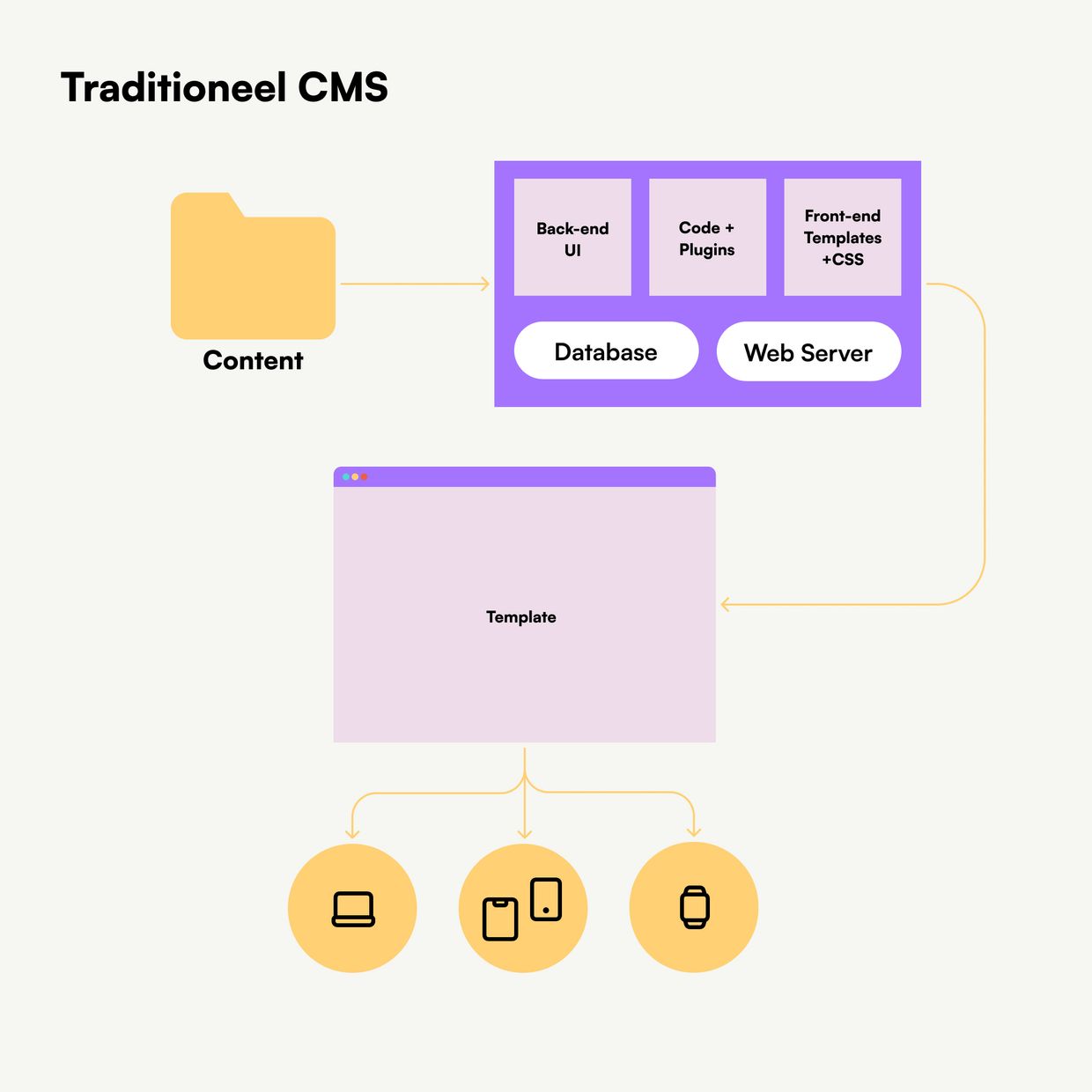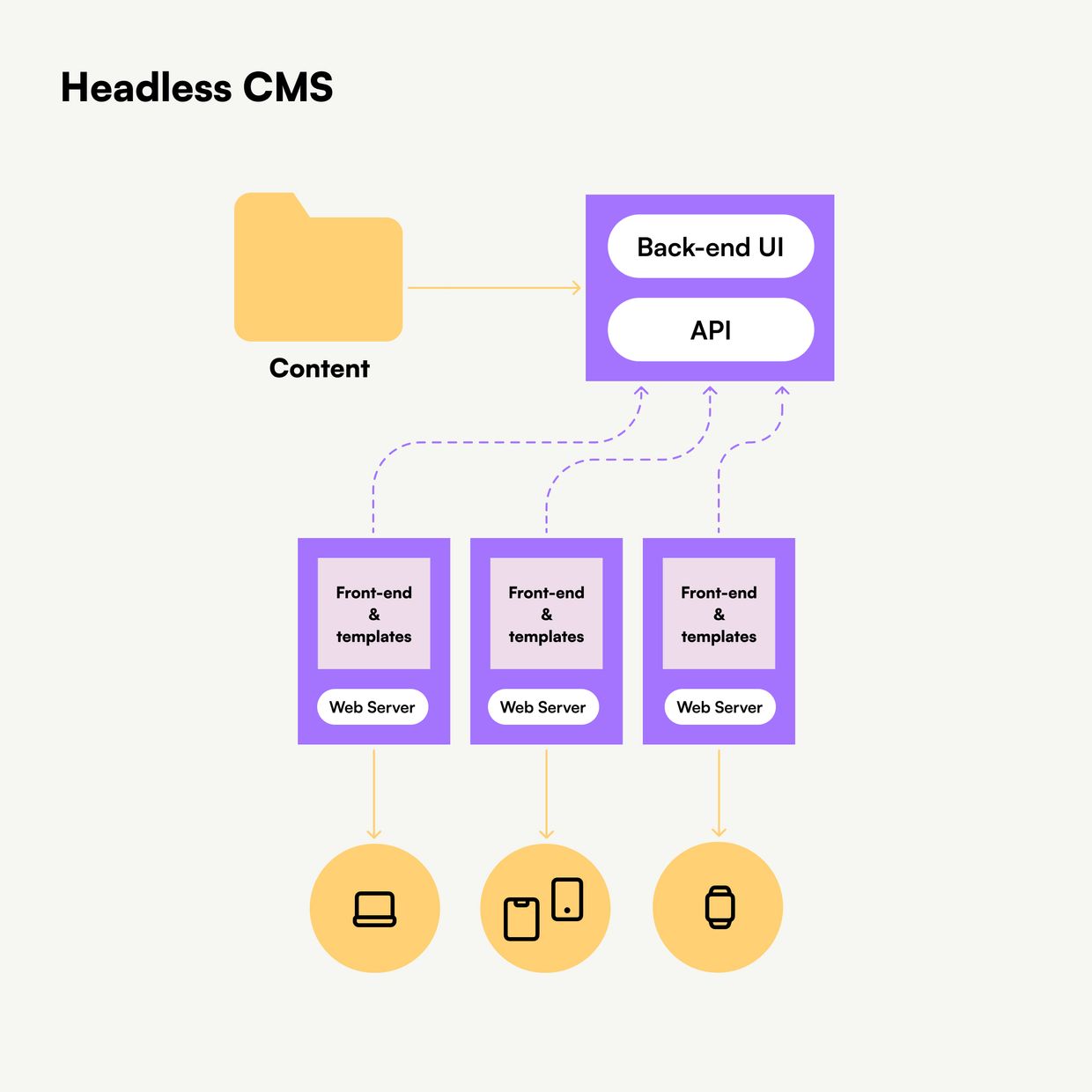De verschillen
Standaard CMS versus Headless CMS
In tegenstelling tot een traditioneel CMS, zoals bijvoorbeeld WordPress, biedt een Headless CMS alleen de backend infrastructuur om content te beheren. Hierdoor is een Headless CMS niet gebonden aan een specifieke front end-technologie en hebben ontwikkelaars meer vrijheid om de frontend-applicatie aan te passen.
Je zou bijvoorbeeld een Headless CMS kunnen gebruiken om content te beheren voor een website, mobiele app of smartwatch app.




